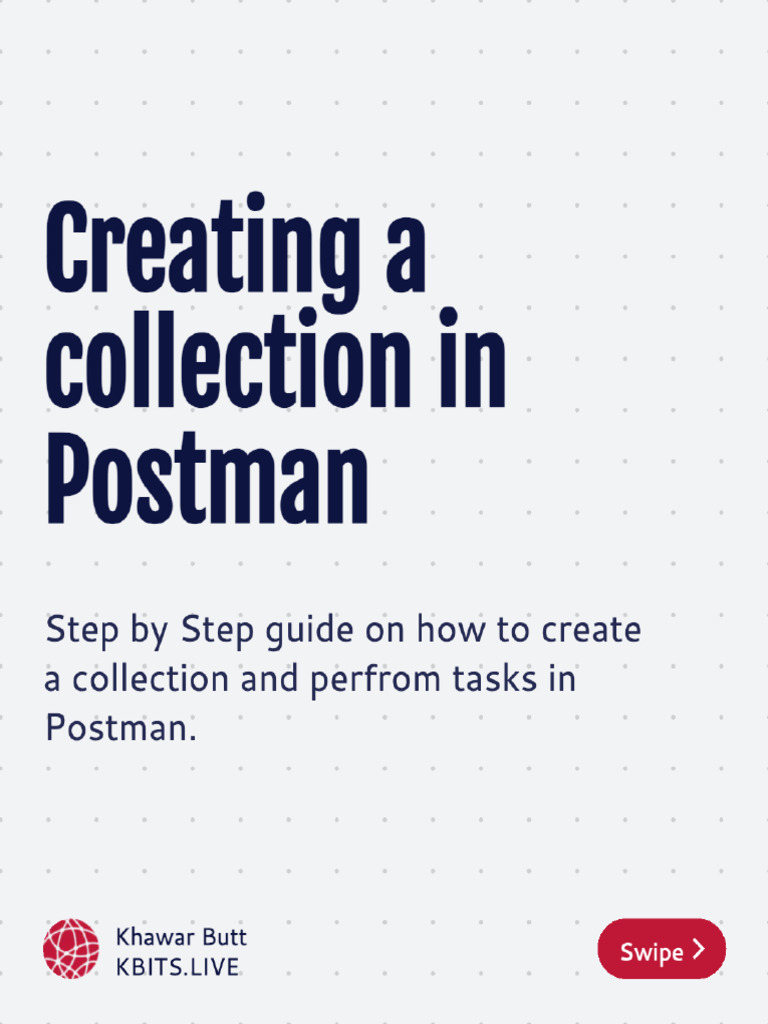Advanced Postman Techniques: Mastering The Tool Like A Pro

Table of Contents
Mastering Postman Collections for Efficient API Testing
Postman Collections are the cornerstone of organized and efficient API testing. Mastering them is crucial for handling large-scale API projects and improving your overall workflow.
Organizing and Structuring Collections
Effective organization is key when working with numerous API requests. Think of your collections as well-structured libraries for your API interactions.
- Using folders within collections: Group related requests into folders (e.g., "User Management," "Product Catalog," "Order Processing") for better clarity and navigation. This is especially important for complex APIs.
- Employing clear and descriptive names: Use concise yet descriptive names for both requests and folders. Avoid cryptic abbreviations; aim for names that instantly convey the request's purpose.
- Leveraging collection descriptions: Add detailed descriptions to your collections and individual requests. This acts as built-in documentation, making it easier for you and your team to understand the purpose and functionality of each API endpoint.
- Example: For an e-commerce API, you might have a collection with folders for "User Authentication" (containing requests for login, registration, password reset), "Product Catalog" (requests to fetch product details, search products), and "Order Management" (requests for placing orders, tracking shipments, etc.).
Utilizing Collection Variables and Iterations
Collection variables are powerful for dynamic testing, allowing you to avoid repetitive manual input.
- Defining variables within collections: Create variables to store frequently used values like API keys, base URLs, or user IDs. This makes your tests more maintainable and easier to update.
- Using data files (CSV, JSON): Import data from CSV or JSON files to run the same request multiple times with different inputs. This is ideal for testing various scenarios and edge cases.
- Dynamically generating URLs and request bodies: Use variables within your requests to create dynamic URLs and request bodies. This allows for flexible and comprehensive testing.
- Example: Test user authentication with various usernames and passwords by importing them from a CSV file. The collection variable can then be used within the request's body to parameterize the authentication attempt.
Running Collections and Analyzing Results
Postman provides robust tools for running collections and analyzing the results.
- Using the Postman collection runner: The runner automates the execution of your collection, allowing you to run all your tests efficiently.
- Monitoring collection run results: After running your collection, carefully review the results to identify failed tests and pinpoint areas needing attention.
- Generating reports: Postman offers features to generate reports, summarizing the results of your collection runs for easier analysis and debugging. These reports can then be incorporated into your CI/CD pipeline for continuous monitoring.
- Example: Integrate your collection runs into your CI/CD pipeline using tools like Jenkins or GitLab CI. The automated reports generated by Postman help to monitor API health continuously.
Leveraging Postman Environments for Environment-Specific Testing
Managing different environments (development, staging, production) effectively is critical for preventing errors and maintaining consistent API behavior across different stages. Postman Environments simplify this process.
Defining and Managing Environments
Separate environments allow for easy switching between different API endpoints without modifying your requests directly.
- Creating separate environments: Create individual environments for development, staging, and production, each with its own set of environment variables.
- Using environment variables: Store API keys, URLs, and other sensitive information as environment variables instead of hardcoding them in your requests.
- Switching between environments: Easily switch between environments in Postman to test your API across different stages without making code changes.
- Example: Configure separate environments for
https://api.example.com/dev,https://api.example.com/staging, andhttps://api.example.com/prod.
Using Global and Local Environments
Global and local environments offer granular control over variable scope and management.
- Setting up global variables: Define global variables accessible across all environments. These are useful for values that remain consistent regardless of the environment (e.g., common headers).
- Defining local variables: Create environment-specific variables to override global variables or define environment-specific values (e.g., API keys that differ between environments).
- Overriding global variables: Local environment variables take precedence over global variables, allowing for customized settings in each environment.
- Example: Use global variables for common headers and local variables to store API keys that vary between development, staging, and production.
Unlocking Power with Postman Scripts (Pre-request and Test Scripts)
Postman scripts, written in JavaScript, empower you to automate tasks and validate responses dynamically, significantly enhancing your testing capabilities.
Automating Tasks with Pre-request Scripts
Pre-request scripts execute before a request is sent, allowing you to prepare data dynamically.
- Generating dynamic request data: Generate random data, timestamps, or values based on previous responses.
- Authenticating requests: Implement OAuth 2.0 flows or generate JWT tokens programmatically before sending the API request.
- Setting headers: Dynamically set request headers based on previous responses or other contextual information.
- Example: Use pre-request scripts to generate a JWT token using your API's authentication endpoint, then automatically include this token in subsequent requests as a Bearer token in the Authorization header.
Validating Responses with Test Scripts
Test scripts execute after a request is sent, allowing you to validate the response against expected outcomes.
- Asserting response status codes: Verify that the API returned the expected HTTP status code (e.g., 200 OK, 201 Created, 404 Not Found).
- Validating response data: Check if the response body contains the expected data using various JavaScript assertion libraries.
- Using JavaScript assertions: Employ JavaScript functions like
pm.expect()to make assertions about the response data. - Example: Write a test script to verify that a user registration API returns a 201 Created status code and that the response body contains the newly registered user's ID.
Advanced Postman Features for Enhanced Workflow
Beyond the basics, Postman offers several advanced features to optimize your workflow.
Utilizing Monitors for Proactive API Monitoring
Postman Monitors allow you to proactively monitor your APIs for availability and performance.
- Setting up monitors: Schedule regular checks of your API endpoints to ensure they remain operational.
- Receiving notifications: Configure email or other notifications to alert you of failed tests.
- Integrating monitors with alerting systems: Integrate Postman monitors with your existing alerting and monitoring systems for comprehensive oversight.
- Example: Configure a monitor to check the availability and response time of your critical API endpoints every 5 minutes.
Collaboration and Sharing using Postman Workspaces
Postman Workspaces facilitate seamless collaboration among team members.
- Creating workspaces: Organize collections and environments into workspaces, creating a central hub for team collaboration.
- Managing permissions: Control access to workspaces, allowing you to share collections and environments selectively with specific team members.
- Collaborating on API testing: Work together on API testing and development within a shared environment, streamlining the development process.
- Example: Create a workspace for your API development team, granting different permissions based on roles (developer, tester, etc.).
Conclusion
This guide has provided you with advanced Postman techniques to significantly enhance your API testing and development workflow. By mastering Postman collections, environments, scripts, and monitoring features, you can achieve greater efficiency, improved collaboration, and more robust API testing processes. Take the next step and explore these advanced features to become a true Postman pro. Start mastering the tool and unleash the full potential of advanced Postman techniques today!

Featured Posts
-
 Duelo En El Tenis Rafa Nadal Llora La Perdida De Una Leyenda
May 19, 2025
Duelo En El Tenis Rafa Nadal Llora La Perdida De Una Leyenda
May 19, 2025 -
 Australia No Junior Eurovision Return In 2025
May 19, 2025
Australia No Junior Eurovision Return In 2025
May 19, 2025 -
 Parg To Represent Armenia At Eurovision In Concert 2025
May 19, 2025
Parg To Represent Armenia At Eurovision In Concert 2025
May 19, 2025 -
 Deb Haaland Enters New Mexico Governors Race
May 19, 2025
Deb Haaland Enters New Mexico Governors Race
May 19, 2025 -
 Fsu Shooting Victim Identified As School Employee Father A Former Cia Operative
May 19, 2025
Fsu Shooting Victim Identified As School Employee Father A Former Cia Operative
May 19, 2025
